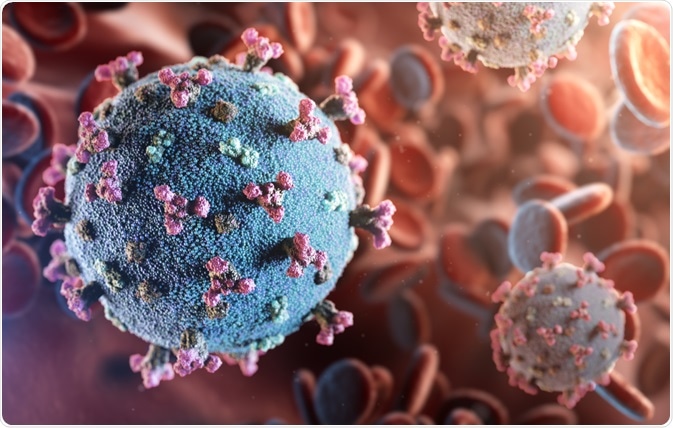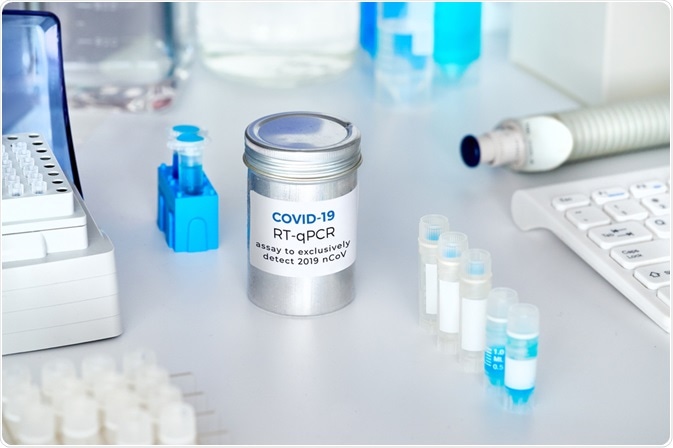buy rimonabant online canada

Understanding the duration of viral shedding of the SARS-CoV-2, as well as how it relates to a positive or negative PCR test, is crucial to the implementation of effective public health efforts aimed towards controlling the spread of this virus.

Image Credit: creativeneko/Shutterstock.com
Defining viral shedding
When an individual gets infected by a respiratory virus like the novel severe acute respiratory syndrome coronavirus 2 (SARS-CoV-2), the virus particles will bind to the various types of viral receptors, particularly the angiotensin-converting enzyme 2 (ACE2) receptors in the case of SARS-CoV-2, that line the respiratory tract.
Throughout this ongoing process, infected individuals, who may not yet be experiencing any of the viral symptoms, buy generic prevacid coupons no prescription are shedding viral particles while they talk, exhale, eat, and perform other normal daily activities.
Under normal circumstances, viral shedding will not persist for more than a few weeks; however, as researchers gain a more in-depth understanding of the viral clearance of SARS-CoV-2, they have found that certain populations will shed this virus for much longer durations.
In fact, a growing amount of evidence indicates that the viral shedding of SARS-CoV-2 begins before a patient is symptomatic, peaks at the point of or shortly after symptom onset and can continue to be released even after the individual’s symptoms have been resolved.
SARS-CoV-2 shedding persistence
The duration of viral shedding can be used to categorize the infectivity of a person; therefore, this information is crucial in implementing effective infection prevention strategies, such as appropriate quarantine durations and mask requirements.
Currently, SARS-CoV-2 infection is confirmed with a positive polymerase chain reaction (PCR) test that can be conducted regardless of whether an individual is experiencing symptoms. Through such PCR tests, viral shedding of SARS-CoV-2 has been found to have a median duration of 12 to 20 days, with a persistence that can reach up to 63 days after initial symptom onset.
Whereas about 90% of mild cases have been found to clear the virus within an average of 10 days after symptom onset, individuals who have recovered from the severe disease have been found to have prolonged viral RNA shedding with a median duration of 31 days.
In addition to symptom severity being a predictive factor of viral shedding duration, the sampling location also appears to determine when peak viral loads occur. Within the upper respiratory tract (URT), for example, peak viral load appears to occur between days 4 and 6 following the onset of symptoms, whereas peak viral loads within the lower respiratory tract appear to arise later.
The viral shedding of SARS-CoV-2 also occurs within the gastrointestinal (GI) tract in the form of stool for up to 33 days after a negative PCR test; however, these viral loads appear to be less as compared to those identified within the respiratory tract and occur at a later time. Notably, the viral shedding of SARS-CoV-2 from the GI tract does not appear to have any correlation with disease severity.
How does viral shedding contribute to its transmission?
Unfortunately, there remains uncertain information on the proportion of SARS-CoV-2 cases that are asymptomatic. The reported values of asymptomatic cases can range anywhere from 1% to as high as 78%.
Moreover, it is unclear as to whether these “asymptomatic” cases are truly asymptomatic in the sense that these infected individuals will never experience any of the viral symptoms, or are rather presymptomatic, meaning that these individuals had no symptoms at the time of their positive PCR test but eventually developed symptoms later.
Even among presymptomatic patients, the higher level of SARS-CoV-2 viral shedding from the URT is a key factor in its high transmissibility, particularly when compared to its genetically similar predecessor SARS, which mainly occurred within the lower respiratory tract.
Taken together, these factors support the case for federal governments around the world to enforce national mask mandates to the general public, particularly when individuals are in crowded outdoor or indoor spaces.
Aside from the viral shedding that occurs in asymptomatic and/or presymptomatic individuals, this time-sensitive characteristic of SARS-CoV-2 can also assist in a wide range of public health surveillance efforts. During both the SARS outbreak of 2002 and 2003, as well as during the current pandemic, researchers hypothesize that live viral particles present within fecal matter moving through sewage pipes could infect individuals through aerosols or droplets.
Combined with information on the viral shedding duration of SARS-CoV-2 from the GI tract, researchers could test wastewater supplies as a surveillance method for community spread.

Image Credit: anyaivanova/Shutterstock.com
References and Further Reading
- “Mayo Clinic Q&A podcast: What is viral shedding?” – Mayo Clinic Youtube Channel
- Campiolo, C. C., Cevallos, E. C., Assi, M., et al. (2020). Clinical predictors and timing of cessation of viral RNA shedding in patients with COVID-19. Journal of Clinical Virology 130. doi:10.1016/j.jcv.2020.104577.
- Widders, A., Broom, A., & Broom, J. (2020). SARS-CoV-2: The viral shedding vs infectivity dilemma. Infection, Disease & Health 25(3); 210-215. doi:10.1016/j.idj.2020.05.002.
- Gandhi, M., Yokoe, D. S., & Havlir, D. V. (2020). Asymptomatic Transmission, the Achilles’ Heel of Current Strategies to Control Covid-19. New England Journal of Medicine 382; 2158-2160. doi:10.1056/NEJMe2009758.
Further Reading
- All Coronavirus Disease COVID-19 Content
- What Mutations of SARS-CoV-2 are Causing Concern?
- What is the Clinical Impact of COVID-19 on Cancer Patients?
- Can Pets Get COVID-19?
- An Overview of the SARS-CoV-2 Vaccines
Last Updated: Oct 5, 2020

Written by
Benedette Cuffari
After completing her Bachelor of Science in Toxicology with two minors in Spanish and Chemistry in 2016, Benedette continued her studies to complete her Master of Science in Toxicology in May of 2018.During graduate school, Benedette investigated the dermatotoxicity of mechlorethamine and bendamustine, which are two nitrogen mustard alkylating agents that are currently used in anticancer therapy.
Source: Read Full Article